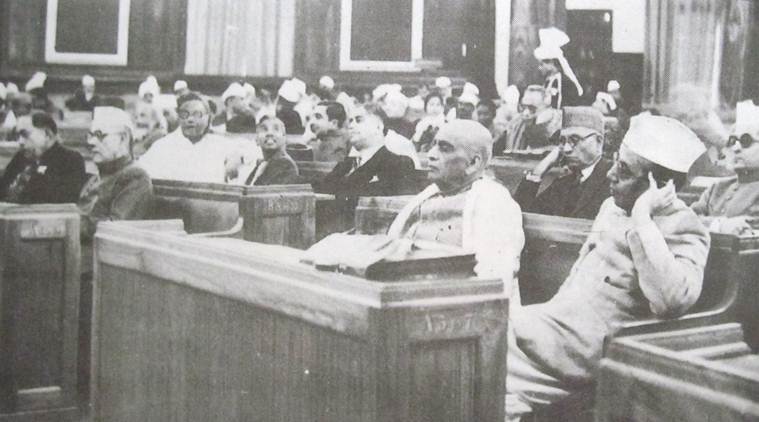Republic Day 2017: What is the history of
January 26?
When the constitution of India was born, it was considered necessary by
the makers of the document to celebrate it on a day associated with national
pride

First
day (9 December 1946) of the Constituent Assembly. (Wikimedia Commons)
On December 9, 1946 the Constituent Assembly met for the first time in
the Constitution Hall of Parliament House, with the intention of putting
together the document that would go on to form the backbone of the independent
India’s government. Exuberant and full of hope, the 207 members out of 292
present in the first session started the debate and discussions which would
continue for the next three months, culminating in the constitution of India.
The British government sent the Cabinet mission to India in 1946 to
discuss with Indian leaders, the process for the peaceful transfer of power. As
per the guidelines laid down by the mission, provincial legislative elections
were held resulting in the nomination of 292 representatives who would go on to
form the Constituent Assembly. Those elected included names like Sardar
Vallabhbhai Patel, Maulana Abul Kalam Azad, Sarojini Naidu and Pandit Jawaharlal
Nehru among others. The task at hand was humongous. Resolutions
laid out had to take care of aspects like territorial integrity, socio-economic
equality, justice of law and minority rights. Setting out the objectives for
the Constituent Assembly, Pandit Jawaharlal Nehru said the following:
“The first task of this Assembly is to free India through a new
constitution, to feed the starving people, and to clothe the naked masses, and
to give every Indian the fullest opportunity to develop himself according to
his capacity. This is certainly a great task.”
In the next 3 years, the Constituent Assembly held 11 sessions over 165
days. The draft constitution was approved on December 9, 1949. About a month
later, on January 26, 1950 the Constitution of India came into force
officially, making the newly born nation of India a modern republic.

The original text of the Preamble to
the Constitution of India. (Wikimedia Commons)
The date chosen for the official enforcement of the constitution had a
significance attached to the sentiments of the Indian nationalists. When on
December 31, 1929, Nehru hoisted the tricolour in Lahore and demanded “purna
swaraj”, the date set for independence was January 26, 1930. The day was
celebrated as the “purna swaraj” day for the next 17 years. When independence
was finally granted in 1947 however, the day set upon by the British was August
15. It is said that the independence day was so chosen to coincide with the
second anniversary of the day when Japanese forces submitted to allied powers
after the Second World War. In the words of Ramachandra Guha, “freedom finally
came on a day that resonated with imperial pride rather than nationalist sentiment.”
When the constitution of India was born, it was considered necessary by
the makers of the document to celebrate it on a day associated with national
pride and the best choice available was that of “poorna swaraj” day- January
26. For the next 67 years, India has been celebrating January 26 as the date
when it elevated itself from an independent nation to a modern republic,
strengthened in all its glory by a fully functioning constitution.
© The Indian Express Online Media Pvt Ltd







 →
→










